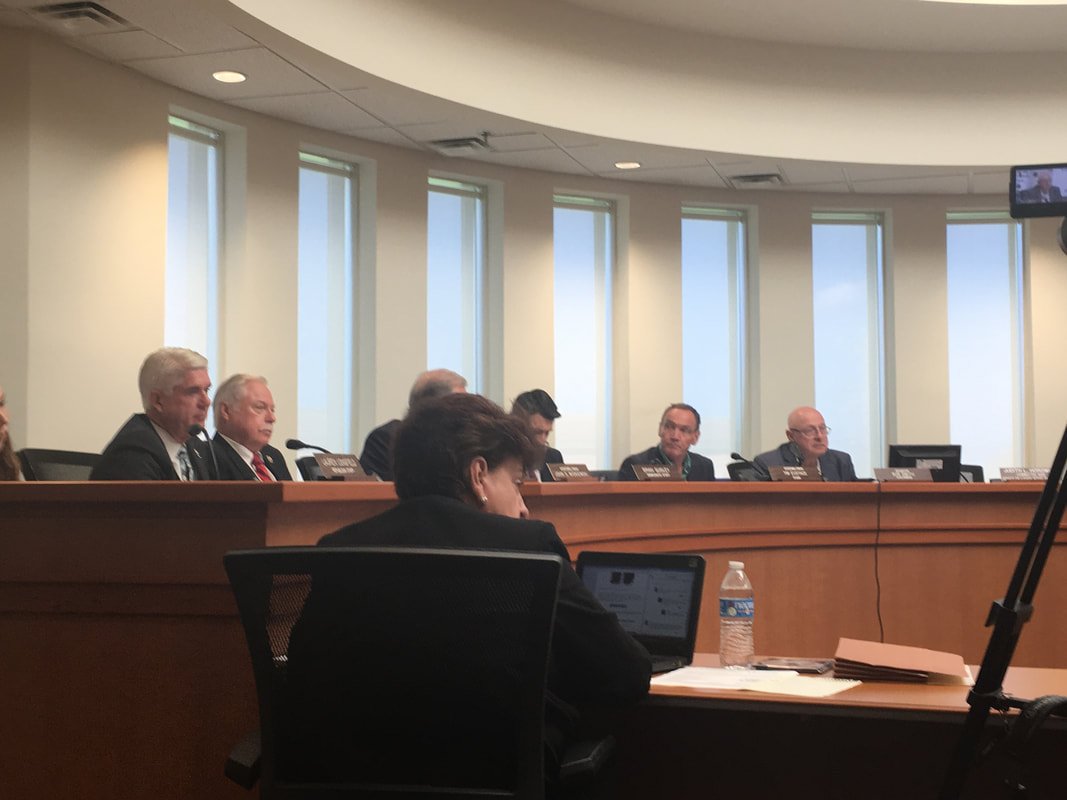|
Sea level rise, increased storm events, and our ability to mitigate and adapt to these hardships created by climate change are extremely difficult to discuss on a warm, sunny day in Lavallette, New Jersey, in the heart of Ocean County. Most people would rather spend the day at the nearby ocean, sinking their toes into a (replenished) sandy beach. Despite the beckoning of the nearby waves, every August New Jersey environmental policy makers hold a joint Senate and Assembly Environment and Energy Committee meeting at the Jersey Shore. Lawmakers hear from experts and the public about a particular issue of importance to our New Jersey coast. This year lawmakers took input on what some say is the biggest environmental challenge facing our shore and our state … climate change. The experts provided a less than rosy outlook, urged immediate action, and outlined what New Jersey must do to achieve resiliency in the face of climate change. Without a doubt, there is much work to be done and the tasks at hand can seem daunting. But with proper planning and implementation, we can better prepare for our changing climate and improve the outlook for our coastal communities and the entire state.
The need to plan, plan again, and then plan some more was frequently discussed. The Shore Protection Master Plan, Pinelands Comprehensive Management Plan, Water Supply Master Plan, Highlands Plan, were all mentioned as requiring ‘updates’ to account for the latest climate science. Indeed, much is at risk due to our changing climate: public health, impacts of an acidifying ocean, our coastal economy, transportation and municipal infrastructure, water supply and source water quality. The solutions offered were many: protect and restore wetlands; assist communities with strategic, long-term response plans; improve transit planning; but most of all, increase renewable energy to reduce our CO₂ emissions. We will need to make all of these changes -- while keeping our Jersey Shore beaches accessible and protecting all we love to do along the coast. New Jersey has the ability to change our policies and tackle the causes and impact of climate change. The experts testifying to the Legislature provided a host of feasible strategies. But do we have the political “will” to pursue them? That’s where smart ocean planning comes in. When New Jersey looks to offshore wind to help meet clean energy goals, we will need to know where and how that could happen off our shores. Most importantly, we need to do so without harming the other valuable resources and traditional uses, like fishing and marine wildlife habitat. The Mid-Atlantic has this very kind of planning tool. It is the Mid-Atlantic Regional Ocean Action Plan (Action Plan) and it can help ensure healthy ocean ecosystems while planning for other uses such as offshore wind, cables and shipping, national security, and even offshore sand mining, necessary to replenish our beautiful beaches. Speaking of those beautiful (restored) beaches, the Ocean Action Plan considers how to ensure we have enough sand to restore our beaches and protect our coastal communities from the next big storm. Smartly, the Ocean Action Plan incorporates science, mapping, and stakeholder input so we can avoid mining offshore habitat that serve as prime fishing areas or essential fish habitat. The American Littoral Society thanks the New Jersey Senate and Assembly Committees for hearing concerns and solutions about combating the impacts of climate change in New Jersey. They clearly understand this is an important and urgent issue, with much work to be done. With their leadership and support, the Mid-Atlantic Regional Ocean Action Plan can provide our state and region a critical coastal and offshore roadmap for tackling the serious challenges created by climate change. Comments are closed.
|
Archives
July 2024
Categories
All
|


